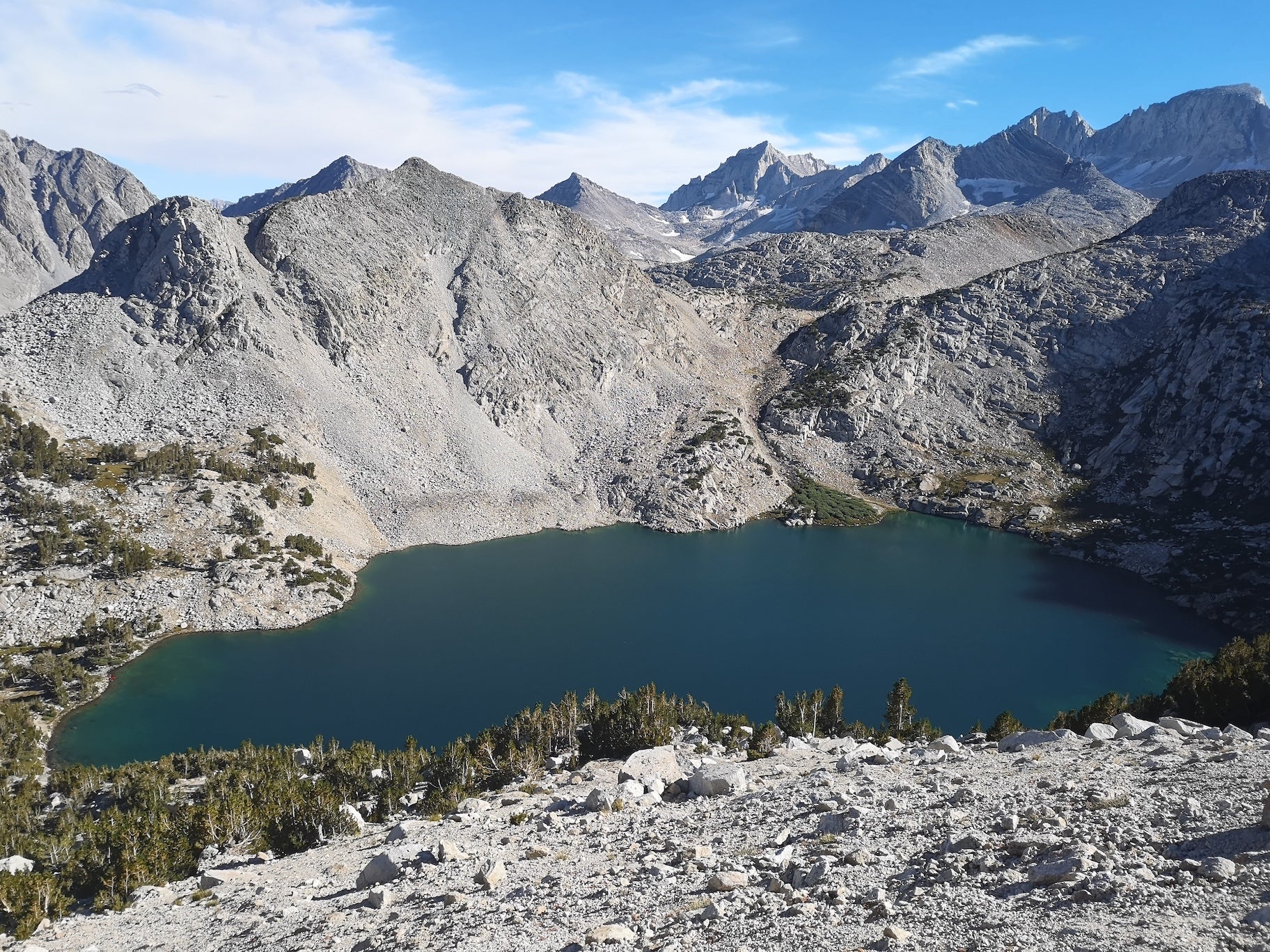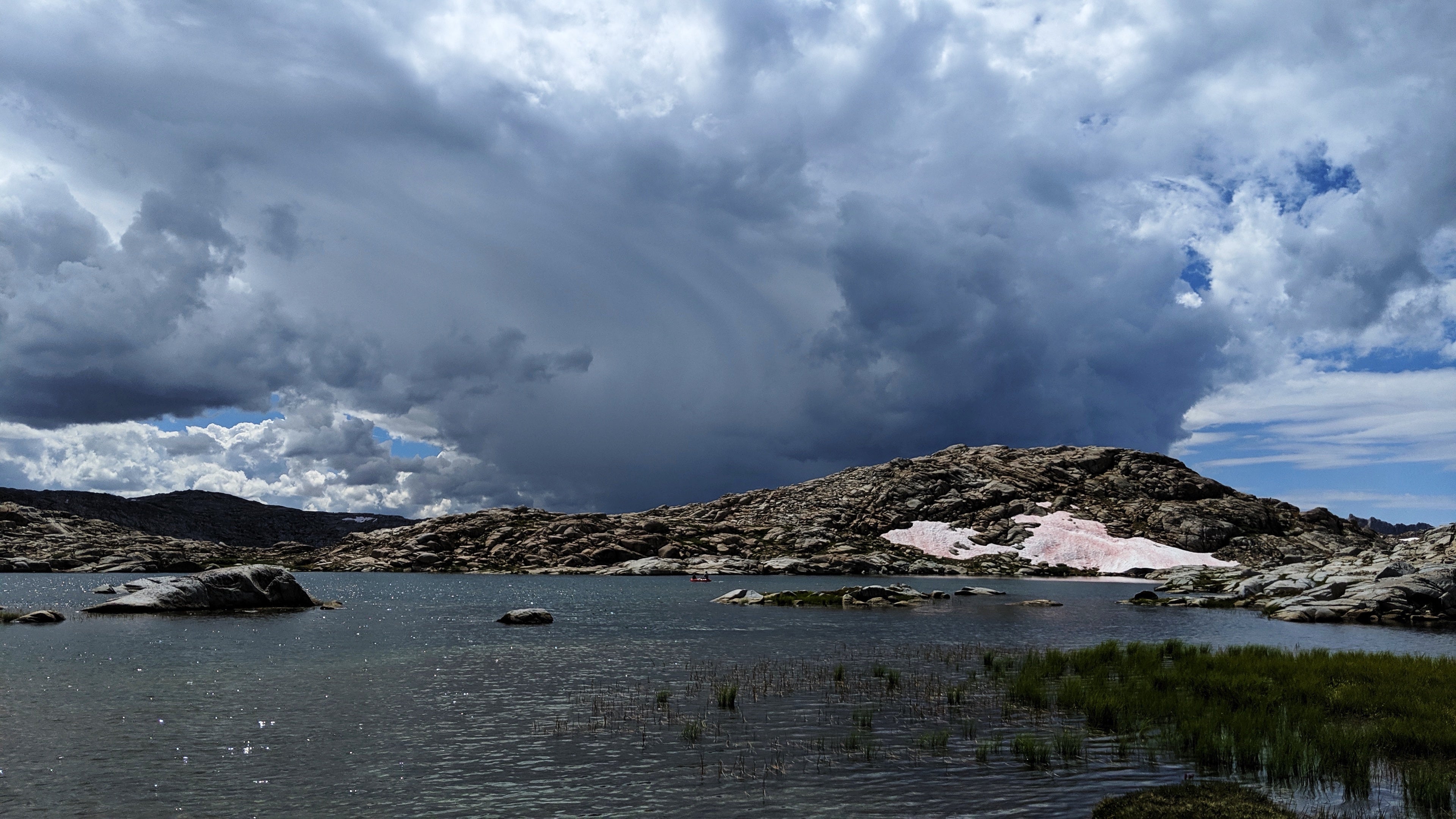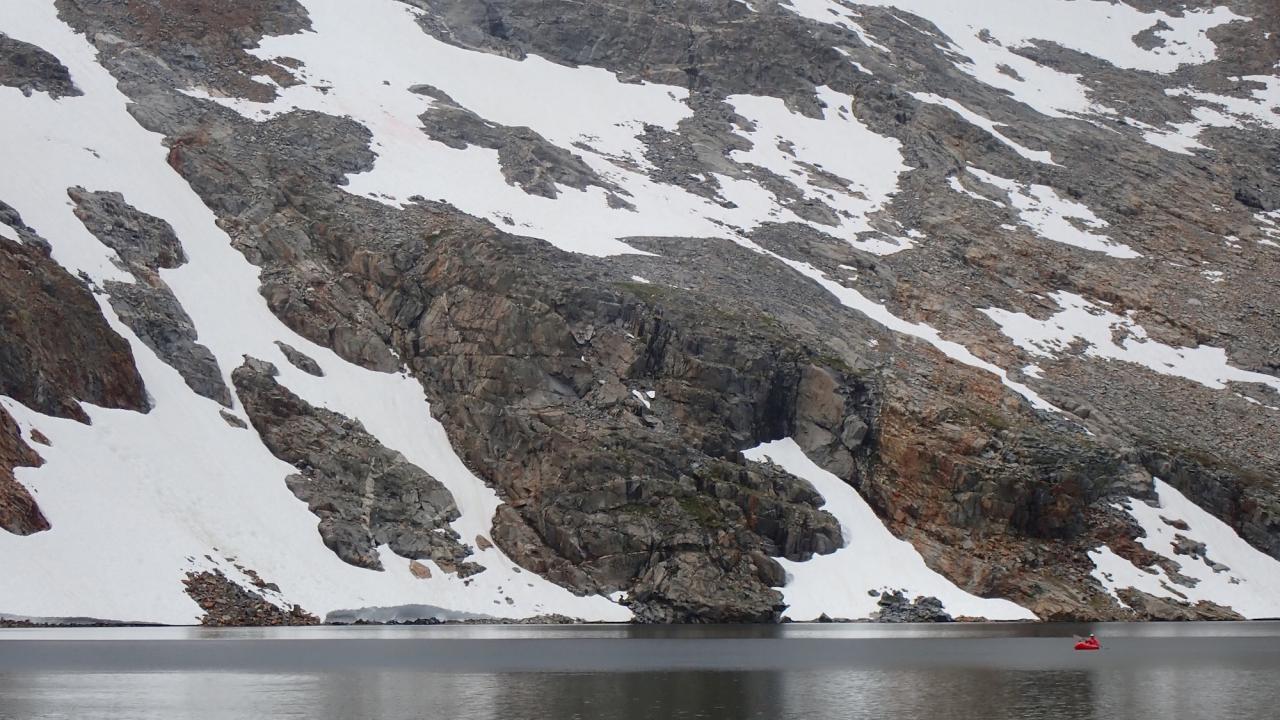Quick Summary
- Scientists placed a network of sensors in remote mountain lakes to learn how the lakes spend their winter
- Study is the first to look at ice cover and under-ice conditions in small Sierra Nevada lakes
How small mountain lakes spend their winters is largely unknown to scientists, despite winter representing nearly half the year in such environments. A study by the University of California, Davis, helps demystify what happens above and below the ice.
The study, published in a special issue of the Journal of Geophysical Research: Biogeosciences, is the first to look at ice cover and under-ice conditions in small Sierra Nevada lakes, which number in the thousands.
Such baseline knowledge is critical for understanding how high-elevation lakes respond to climate change and to the loss of ice and snow. Despite heavy snowfall this winter, climate projections estimate the Sierra snowpack could drastically shrink or even disappear by 2100.
“Winter is a big part of the year. We don’t understand it, and we’re losing it,” said lead author Adrianne Smits, a National Science Foundation postdoctoral scholar at UC Davis. “Lakes in many cold regions of the world are losing ice cover fast, and very few studies examine what happens to them in winter. People assume they’re hibernating or dead, and the more we learn, we find that’s completely false.”

A sense of snow
For the study, researchers placed a network of underwater sensors in 15 remote mountain lakes throughout the Sierra Nevada to try to understand what type of lakes may be the most sensitive to loss of snow and ice cover. Placed during the more accessible warmer months, the sensors took hourly measurements of water temperature, dissolved oxygen, the timing of ice formation and breakup, and other climate variables for up to five winters.
The study found that most mountain lakes will have shorter ice cover, warmer water and higher oxygen concentrations as winters warm. But small and large lakes will respond differently to the loss of ice cover and snow, with small lakes being more susceptible to changes between wet and dry years.
Other findings include:
- Snowfall and air temperature determine when ice breaks up and how long it lasts.
- Lake size and shape control oxygen and temperature immediately after ice forms, but late winter conditions depend on other variables that dictate how long ice covers the lake.
- Small, shallow lakes experience low-oxygen conditions more so than large, deep lakes. However, shallow lakes are also more dynamic because heavy snowfall causes ice to submerge, changing oxygen levels as water is displaced by ice.
The findings can help inform conservation management related to water resources, endangered and threatened species, and summer algal blooms, which thrive in years with early ice breakup.
“We are used to mountain lakes being crystal clear, but they are likely to become increasingly ‘green,’ with large algae blooms around the shoreline,” Smits said.
Remote work
At least 12,000 small lakes are scattered throughout the slopes and valleys of the Sierra Nevada. Getting to them is challenging even when not socked in with ice and snow — a key reason they are understudied.
For Smits, a typical field visit included an all-day drive, then backpacking 8 to 15 miles each way while carrying more than 50 pounds of gear. In addition to the data, she was rewarded with spectacular views and a landscape few others experience.
One of the more arduous treks became Smits’ favorite site, Boundary Lake, along the edge of Yosemite National Park. She saw it in lush, wet years and in dry years with smoke-filled air. Remnants of the Rim Fire made the hike a slog through broken trail and a scramble into the forest. But at the end was a quiet beauty under a blue and pink-streaked sky that she had all to herself.
“It’s really amazing to be able to go to places like that for work,” said Smits, who is also an artist whose paintings are clearly inspired by a love for the natural world. “These lakes are beautiful and all different in their own way. I used to think the Sierra was just pine trees and granite, but that’s not the case.”

On the record
The network includes two long-term study sites: Castle Lake, which UC Davis limnologist Charles Goldman began studying more than 50 years ago, and Emerald Lake, studied since the 1980s by the study’s senior author Steven Sadro, a UC Davis professor in the Department of Environmental Science and Policy. The sites anchor points tied through time, creating a historic record that can greatly inform climate research.
“We know climate change is causing ice cover to decrease,” Sadro said. “What are the implications of that? What is the climate sensitivity of lakes? It’s not a one-paper answer. This will be at least a decade of work to characterize the basic function in the lakes. But we’re learning more that will help us make more accurate predictions about why and how the system will change.”
Additional co-authors include Nicholas W. Gomez of UC Davis and Jeff Dozier of UC Santa Barbara.
The study was funded by the National Science Foundation’s Division of Earth Sciences.
This study and several others contributed by Sadro and Smits in the winter limnology special issue of JGR: Biogeosciences stemmed from the American Geophysical Union’s Chapman Conference, “Winter Limnology in a Changing World,” held in 2019.
Media Resources
Media Contacts:
- Adrianne Smits, UC Davis Environmental Science and Policy, adriannesmits@gmail.com
- Steven Sadro, UC Davis Environmental Science and Policy, ssadro@ucdavis.edu
- Kat Kerlin, UC Davis News and Media Relations, 530-750-9195, kekerlin@ucdavis.edu
